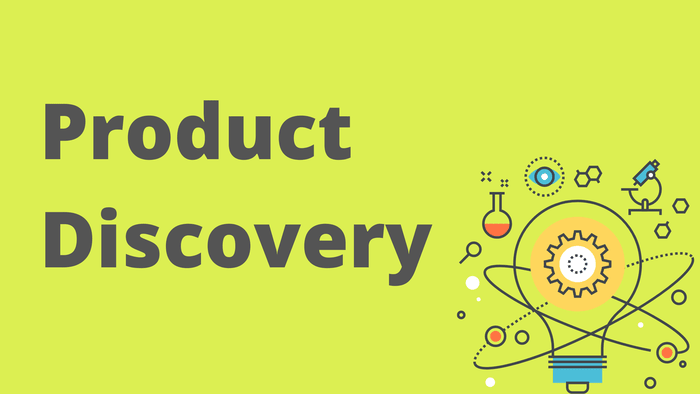In today's highly competitive business environment, the success of a project often depends on the strength of its foundation. For startups and established businesses alike, developing a clear vision of their product is essential. This is where Product Discovery services come into play. In this article, we'll explore the concept of Product Discovery and examine why it is crucial for creators of businesses, especially in the United States, to consider utilizing these services to maximize their project's potential.
Definition of Product Discovery
Product Discovery is a comprehensive, structured process that aims to identify, define, and validate the core ideas and features of a product before development begins. This process enables businesses to better understand their target market, user needs, and product requirements, ensuring that their final product aligns with customer expectations and delivers value. Key aspects of Product Discovery Services include:
- Market research: Conduct thorough market research to understand the competitive landscape, identify potential opportunities, and evaluate existing solutions. This step helps businesses uncover gaps in the market and assess the viability of their product idea.
- User research: Gathering insights about the target audience, their preferences, pain points, and expectations. User research techniques, such as interviews, surveys, and focus groups, enable businesses to develop a deep understanding of their customers and create user personas to guide product development.
- Problem definition: Clearly articulating the problem that the product aims to solve, and how it addresses user needs. A well-defined problem statement serves as a foundation for the product vision and ensures that the development team remains focused on the core objectives.
- Product vision and goals: Establishing a clear product vision and defining the goals and objectives that the product aims to achieve. This step provides a high-level view of the product's purpose, target audience, and key value propositions, guiding the development process and decision-making.
- Feature prioritization: Identifying and prioritizing the most important features for the product, based on user needs and market research. This step involves creating a product backlog, which lists the desired features in order of priority, ensuring that the development efforts are focused on delivering the most value to users.
- User experience and user interface design: Designing the product's user experience (UX) and user interface (UI) to ensure that it is intuitive, user-friendly, and aesthetically appealing. This step involves creating wireframes, mockups, and prototypes to visualize and validate the product's design before development begins.
- Technical feasibility: Assessing the technical feasibility of the product idea and identifying potential challenges or constraints. This step helps businesses evaluate the required technologies, resources, and skillsets, ensuring that the product can be developed efficiently and effectively.
- Risk assessment and mitigation: Identifying potential risks and obstacles that could impact the product's success, and devising strategies to mitigate or avoid these issues. This step helps businesses proactively address potential challenges and minimize the likelihood of failure.
Top benefits of Product Discovery sessions
1. Validate your idea
One of the main reasons for startup failure is the lack of product-market fit. According to a study by CB Insights, 42% of startups fail because there is no market need for their product. Product Discovery sessions help you validate your idea by identifying your target audience, understanding their needs, and ensuring that your product addresses those needs effectively. This process is crucial for United States-based businesses, as the region has a highly competitive market with a diverse customer base.
2. Help to select the most vital features
Identifying and prioritizing the most important features of your product can be challenging. Product Discovery sessions help you focus on the essential features that will deliver the most value to your customers. Through user stories, use cases, and customer journey mapping, you can create a clear and concise roadmap for your product, ensuring that your development efforts are not wasted on unnecessary features.
3. Produce design artifacts & prototypes
Another significant benefit of Product Discovery sessions is the creation of design artifacts and prototypes. By visualizing your product's user interface and user experience, you can identify potential design flaws and opportunities for improvement. Prototypes serve as a valuable tool for gathering user feedback, enabling you to iterate and refine your product's design before committing to full-scale development.
4. Increase development speed
By defining your product's vision and objectives during Product Discovery, you can streamline the development process and avoid costly delays. With a clear understanding of your product's requirements and priorities, your development team can work more efficiently, ultimately accelerating the time to market. This is particularly important for businesses in the United States, where rapid innovation is essential to maintaining a competitive edge.
5. Reduce costs and lower risks
Investing in Product Discovery sessions can lead to substantial cost savings in the long run. By validating your idea, identifying the most critical features, and refining your product's design through prototypes, you can minimize the risk of costly mistakes and rework. Additionally, a clear product vision and roadmap can help you optimize your budget and resources, ensuring that your project remains on track and within budget.
Conclusion
In conclusion, Product Discovery services offer numerous benefits for businesses, particularly those in the United States, where competition is fierce and customer expectations are high. By investing in Product Discovery sessions, you can validate your idea, prioritize features, create design artifacts and prototypes, increase development speed, and reduce costs and risks. Ultimately, engaging in this process will set your project on a path to success, ensuring that your product meets market needs and delivers value to your customers.



